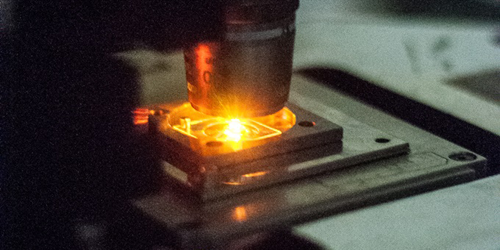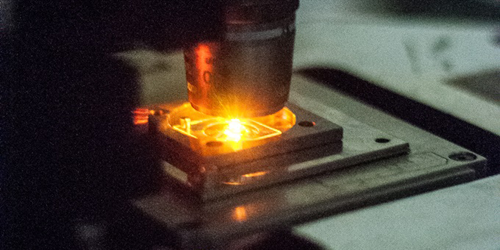Photons Couple Like Cooper Pairs
Inside a superconductor, electrons can bind together into so-called Cooper pairs. A new study has shown that a similar pairing between photons can occur in water and other transparent media. The researchers identified these photonic Cooper pairs through correlations in light that is scattered inelastically. The data matched a model in which the photons interact by an exchange of virtual molecular vibrations.
Normally, photons do not interact, and electrons are not attracted to each other. But in a material, effective forces can arise from interactions with the medium. In the Bardeen–Cooper–Schrieffer (BCS) model of superconductivity, electrons generate distortions in the surrounding lattice, and these distortions (or virtual phonons) can couple two electrons together. Researchers from the Federal University of Rio de Janeiro and the Federal University of Minas Gerais, Brazil, showed that a similar coupling could occur for photons.
The team fired laser pulses into a water sample and detected scattered photons in two frequency bands, one lower and one higher than the initial laser frequency. Photons detected in the lower band lost energy to vibrational motions of the water molecules, while those in the higher band gained energy. The researchers measured a high rate of coincident photons in the two bands, implying an unexpectedly large number of simultaneous scattering events. The team explained these observations—as well as similar behavior in other liquids—using a BCS model in which two photons exchange energy through molecular vibrations that play the role of virtual phonons in superconductors. The authors expect this photon pairing process could offer a new way to generate entangled photons. It might also lead to new phenomena, such as an electromagnetically induced transparency involving vibrational, rather than electronic, excitations
This research is published in Physical Review Letters.
–Michael Schirber
Michael Schirber is a Corresponding Editor for Physics based in Lyon, France.





